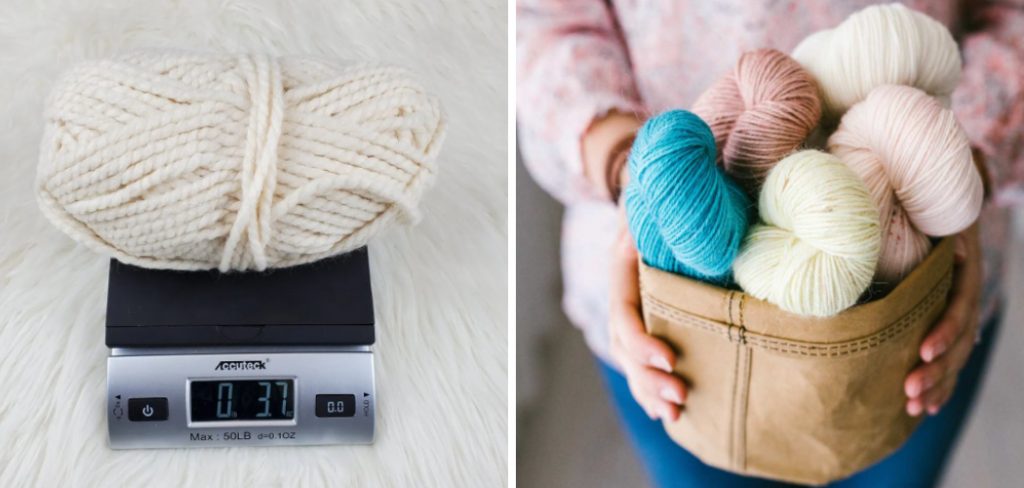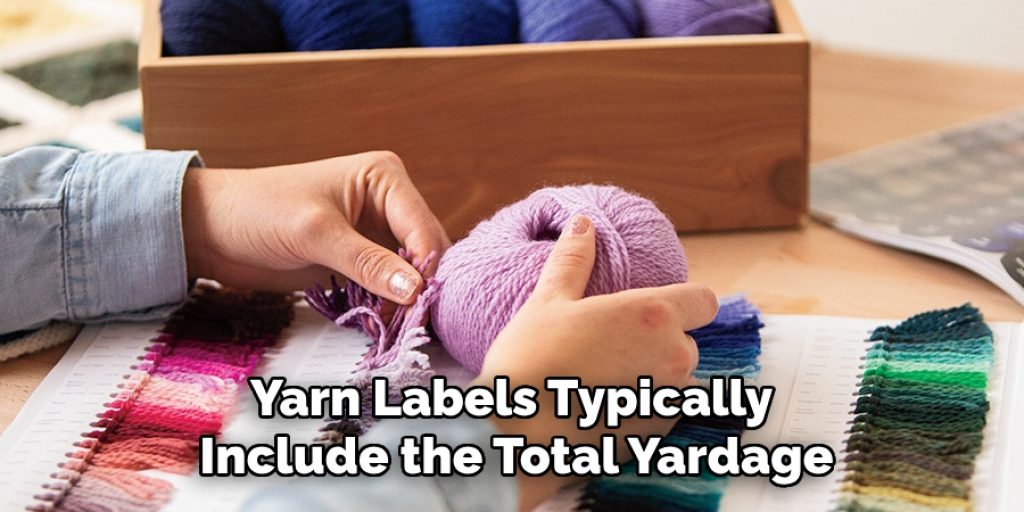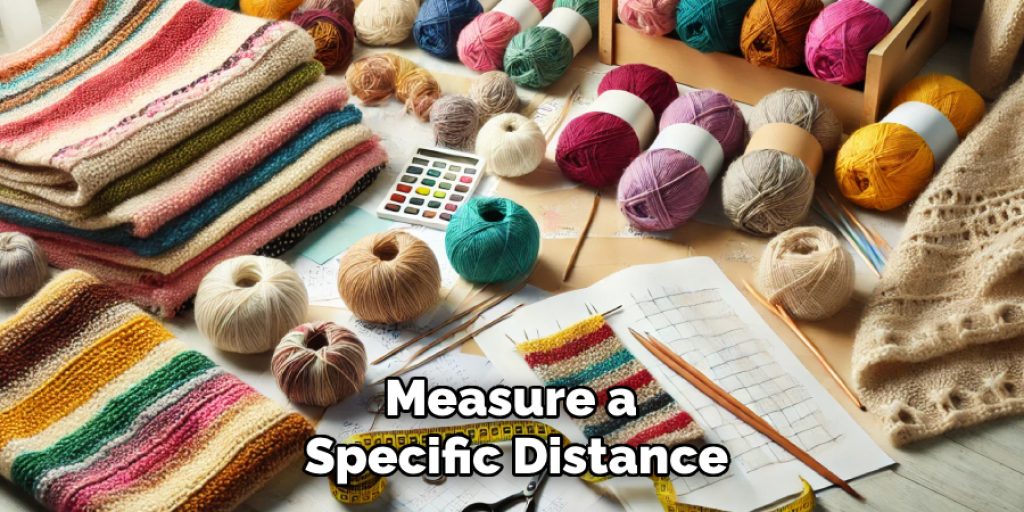How to Calculate Yarn Yardage
Calculating yarn yardage is an essential skill for knitters and crocheters alike, as it ensures that you have enough material to complete your projects without running short. Whether you’re tackling a large blanket or a delicate sweater, understanding how to estimate the amount of yarn needed can save time and avoid frustration. This guide will walk you through how to calculate yarn yardage, breaking down the process into manageable steps to help you make informed decisions on your crafting journey. With the right approach, you can confidently plan your projects, choose the appropriate yarn, and bring your creative visions to life.

Why Calculate Yarn Yardage?
Calculating yarn yardage is crucial for several reasons. Firstly, it helps to prevent the disappointment of running out of yarn mid-project, which can disrupt your creative flow and lead to the frustration of finding a match for your dye lot. Additionally, knowing the exact yardage needed for a project allows you to budget effectively, ensuring you purchase the right amount without overspending on excess yarn. It also aids in selecting the appropriate yarn type and weight for your designs, ultimately enhancing the quality and fit of the finished piece.
Moreover, being accurate in your yarn calculations can contribute to a more sustainable crafting practice by reducing waste and allowing for thoughtful use of materials. Overall, understanding yarn yardage is a vital aspect of successful knitting and crocheting that enhances both the enjoyment and efficiency of your crafting experience.
When to Calculate Yarn Yardage?
Knowing when to calculate yarn yardage is key to ensuring a smooth crafting process. It’s best to assess yardage before starting any new project, especially if you’re working from a pattern that specifies a certain amount of yarn. Additionally, calculating yardage is recommended when adapting or altering a pattern, such as resizing a garment or using a different yarn weight. If you’re planning to mix yarns from different sources or dye lots, estimating total yardage becomes important to ensure consistency throughout the project.
Lastly, the need to calculate yardage arises when you are gathering materials for multiple projects at once, allowing you to manage your resources effectively and avoid delays in your crafting schedule. By being proactive about yarn yardage, you can enhance your overall experience and outcome of your knitting or crocheting endeavors.

10 Methods How to Calculate Yarn Yardage
1. Using the Yarn Label Information
One of the simplest methods to calculate yarn yardage is by using the information provided on the yarn label. Yarn labels typically include the total yardage or meters of the skein or ball. If you have a full skein, this information will directly give you the yardage. For partially used skeins, you can weigh the remaining yarn and use the original yardage and weight to calculate the remaining yardage proportionally. For example, if a full skein weighs 100 grams and has 200 yards, and your remaining yarn weighs 50 grams, you have approximately 100 yards left. This method is quick and convenient for standard, labeled yarns.
2. Measuring Yardage with a Niddy Noddy
A niddy noddy is a tool used by spinners and weavers to measure and skein yarn. It consists of a central handle with perpendicular arms at each end. To calculate yardage, wrap the yarn around the niddy noddy, counting the number of wraps. Each complete wrap corresponds to a specific length, which is often 1.5 or 2 yards, depending on the size of the niddy noddy. Multiply the number of wraps by the length of one wrap to determine the total yardage. This method is precise and especially useful for handspun yarn.
3. Using a Yarn Swift and a Measuring Tape
If you don’t have a niddy noddy, you can use a yarn swift and a measuring tape to calculate yardage. Set up the swift and place the yarn on it. Measure a specific distance, such as 1 yard, and use this as your measuring unit. Wrap the yarn around the swift, counting the number of wraps. Multiply the number of wraps by the measured unit length to get the total yardage. This method is effective for large quantities of yarn and helps in creating uniform skeins.
4. Calculating Yardage with a Yarn Meter
A yarn meter, also known as a yarn counter, is a device that measures the length of yarn as it passes through. To use a yarn meter, thread the yarn through the device and start winding the yarn onto a skein winder or ball winder. The yarn meter will count the length of yarn as it winds. This method provides an accurate measurement and is particularly useful for commercial and large-scale yarn projects. Yarn meters are available in manual and digital versions, with the latter offering more precise readings.

5. Estimating Yardage by Weight
For yarns without labels or partially used skeins, you can estimate yardage based on weight. First, determine the yardage and weight of a full skein of the same yarn. Weigh the remaining yarn and use the proportion to estimate the yardage. For example, if a full skein of 100 grams has 200 yards, and your remaining yarn weighs 25 grams, you can estimate the yardage by calculating 25 grams100 grams×200 yards=50 yards\frac{25 \text{ grams}}{100 \text{ grams}} \times 200 \text{ yards} = 50 \text{ yards}100 grams25 grams×200 yards=50 yards. This method works well for consistent yarns and is useful when labels are missing.
6. Using a Balance Scale and Known Yardage
A more accurate method to estimate yardage by weight involves using a balance scale and a known length of yarn. Cut a specific length of yarn, such as 1 yard, and weigh it on a precision scale. Weigh the remaining yarn and divide the total weight by the weight of the known length to calculate the total yardage. For instance, if 1 yard of yarn weighs 0.5 grams, and the remaining yarn weighs 25 grams, you have 25 grams0.5 grams/yard=50 yards\frac{25 \text{ grams}}{0.5 \text{ grams/yard}} = 50 \text{ yards}0.5 grams/yard25 grams=50 yards. This method is highly precise and ideal for valuable or unique yarns.

7. Using a Yarn Yardage Calculator
Several online yarn yardage calculators are available to simplify the process. These calculators require input such as the weight and yardage of a full skein, and the weight of the remaining yarn. The calculator then provides an estimated yardage. This method is convenient and quick, especially if you have access to a scale but prefer not to do manual calculations. It is also useful for comparing different yarns and planning large projects where precise yardage is crucial.
8. Wrapping Yarn Around a Ruler
A straightforward method to estimate yardage without specialized tools involves wrapping the yarn around a ruler. Measure a specific length on the ruler, such as 1 foot or 1 meter. Wrap the yarn around the ruler within this length, counting the number of wraps. Multiply the number of wraps by the measured length to determine the total yardage. This method is less precise than others but can be useful for quick estimates and small amounts of yarn.
9. Using a Yarn Length Gauge
A yarn length gauge is a tool designed to measure the length of yarn directly. It consists of a series of grooves or notches that correspond to specific lengths. To use the gauge, wrap the yarn around the notches until it fills the designated length, then count the number of wraps. This tool is simple to use and provides a quick way to measure yarn lengths without advanced equipment. It is particularly useful for small projects and sampling different yarns.

10. Combining Methods for Accuracy
For the most accurate yardage calculation, combine multiple methods. Start with a primary method, such as using a yarn meter or estimating by weight. Cross-check your results with a secondary method, like wrapping around a ruler or using a yarn yardage calculator. Combining methods helps to verify the accuracy of your measurements and ensures you have enough yarn for your project. This approach is especially important for large or complex projects where precise yardage is critical to avoid running out of yarn midway.
Conclusion
Accurate yardage measurement is essential for achieving successful outcomes in knitting and weaving projects. Whether you choose to use a niddy noddy, yarn swift, or various estimation techniques, each method offers unique advantages that cater to different needs and circumstances. By employing the right tools and approaches, you can ensure that you have the correct amount of yarn for your projects, leading to fewer interruptions and more satisfying results. Moreover, combining various methods can enhance precision and reliability, making your crafting experience smoother and more enjoyable.
Embrace these techniques to make the most of your yarn and elevate your creative endeavors. Now that you know how to calculate yarn yardage. While it does take a few steps each time, hopefully now you understand the process and why it’s worth taking the extra step to make sure your floor is properly cared for. So don’t wait any longer, take action today!




